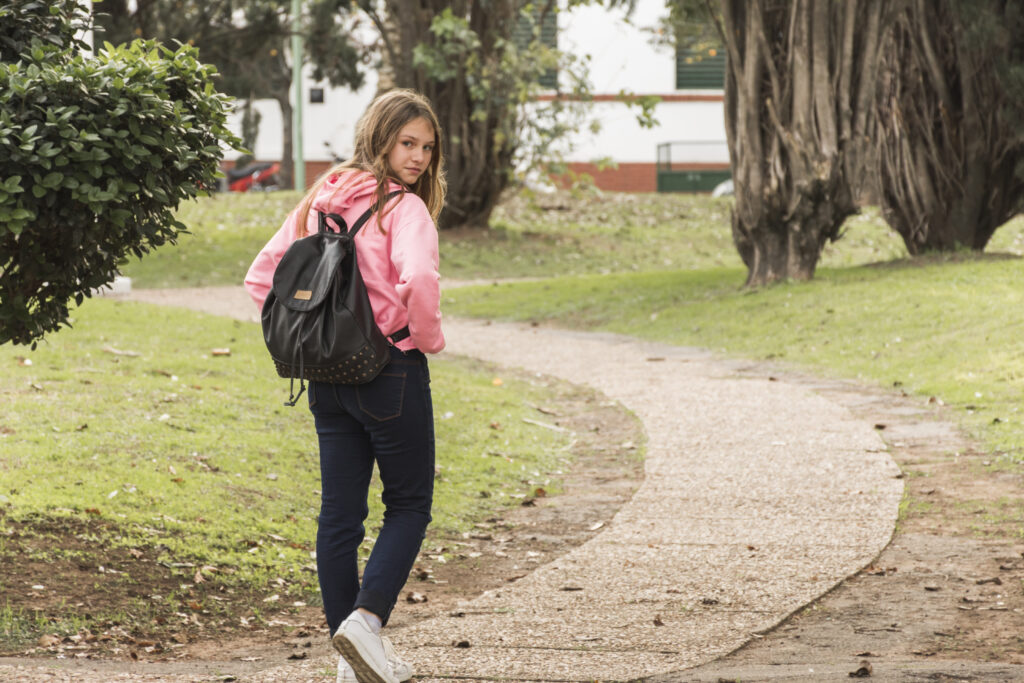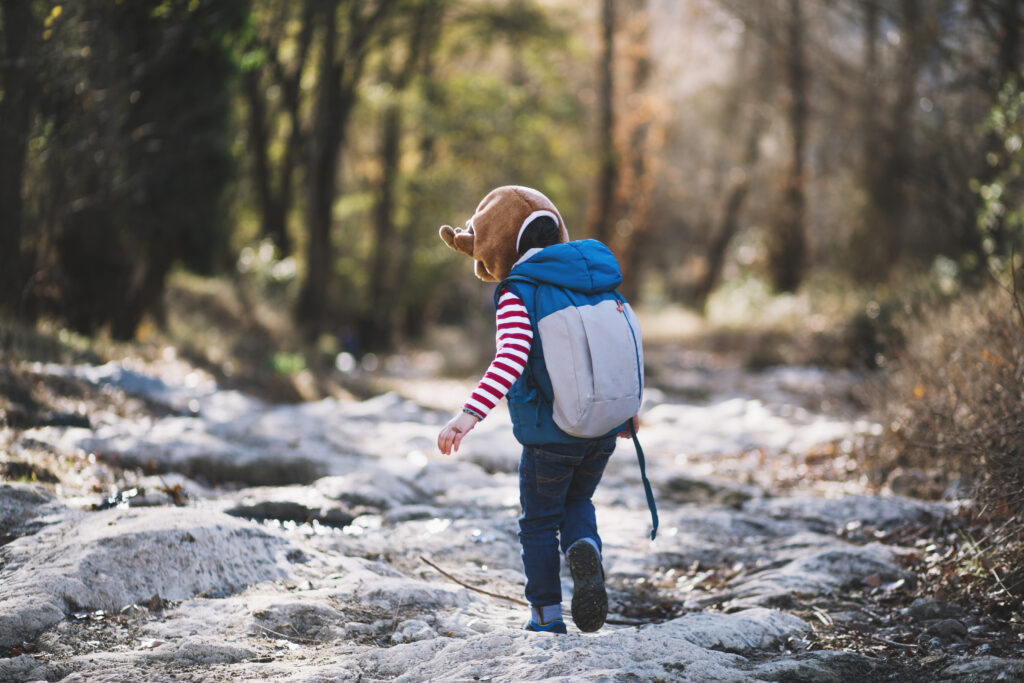Introduction
Choosing appropriate Children’s Hiking Rucksack can greatly define the outcome of your hike and therefore has to be given a lot of consideration. Depending on the nature of the trip, whether it will be a day hike or the main trip for the weekend, the appropriate Best kid hiking backpack can be critical in the comfort, safety, and therefore the enjoyment of the child. In this complete buying guide, you’ll learn all about children’s hiking rucksack, from the features to pay attention to, to the right size and the best brands. At the end of the guide you will be in a position to know what to look for in a Children’s Hiking Rucksack that would suit your child best.
Why the Decision of a Children’s Hiking Rucksack Use is Important
The level of comfort and enjoyment
Elder and Willock (2012) explained that the interior design affected the level of convenience, usability, and pleasure of using new technology in the home.
And on this aspect of hiking, comfort tops everything. The best chosen Children’s Hiking Rucksack also guarantees the child’s comfort and, most importantly, contributes to the overall appreciation of the hike. A well-fitting Girls children’s hiking rucksack USA that has been developed specifically for the child’s use minimizes bothersome aches and pains, and any interference with comfort during the trek, so that the child simply gets on with the fun of the experience. Comfort then involves aspects like support system of the body weight, the shock absorbing materials and the body positioning of the product.
Safety and Health Considerations
Practicality is not just in the fit and design; it plays a central role in the health of your child and their safety. Ill fitted Children’s Hiking Rucksack/ backpack will cause poor posture, back aches, and could even pose even deeper health complications. Specifically if a Children’s Hiking Rucksack is heavy or ill-fitting it can place enormous pressure on a child’s back and shoulders and it can become a chronic problem. Also, a poorly fitted rucksack can be uncomfortable and chafe the skin which will not enhance the hiking experience. Thus, adjusting the REI Kids backpack in a manner that optimizes compliance with the principals of good posture and weight distribution helps avoid these issues.
Bringing Out the Best Out of Hiking
It is however imperative that the right Children’s Hiking Rucksack boosts the hiking experience of your child. Employment of attributes such as hydration reservoirs and multiple pockets can enhance your child’s ability to drink plenty of water and arrange their things efficiently. It likewise enhances their comfort whenever engaging in hiking activities and enables them to be more independent. When it comes to hiking, choosing the right Children’s Hiking Rucksack that is comfortable to wear and has all the right bells and whistles makes hiking a lot less of a chore and a lot more fun.
Main Attributes to Be Taken into Consideration in Children’s Hiking Rucksack
Size and Capacity
Estimating the right size and capacity of the organization.
Selecting a proper size and capacity of a Children’s Hiking Rucksack entails the following by considering the age, size of the child as well as the type of hikes the child will be involved in. Here are some guidelines:
• For Younger Children (Ages 4-7): Rucksacks used by young children can easily hold between 10-15 liters; albeit at lesser dimensions in comparison to the rucksacks that older child utilize. These small Children’s Hiking Rucksack complement the small frames of young kids and normally are developed with fewer functions for easy usage.
• For Older Children (Ages 8-12): Younger children will perhaps be able to carry less weight and this they may require rucksacks with a 20- 30 liters carrying capacity. These Children’s Hiking Rucksack have extra pockets for extra items and are thereby larger to fit the size and strength of children in the larger classes.
Another factor that should inform the capacity you decide to put in your car should be the kinds of hikes you intend to do. Its capacity particularly when it is a day hike may be adequate, but in long hikes more supplies may be needed hence requiring a larger Children’s Hiking Rucksack.

Adjustable Straps and Fit
The Role Played by the Adjustable Straps and Hip Belts
Adjustability is the most vital element of a Children’s Hiking Rucksack as children grow up at a faster rate than adults. Backpacks with elasticated shoulder straps and the hip belt can be better adjusted to the child’s morphological features.
• Shoulder Straps: The option of strap length means that you can easily alter the length of the shoulder straps for the purpose of easily fitting different lengths of torso to you. This feature assists in uniting the Children’s Hiking Rucksack evenly on the shoulders and back of your child.
• Hip Belt: The hip belt is intended to sit on your child’s hip bones; it disperses the weight from shoulder to hip obviously. An adjustable hip belt ensures that the Children’s Hiking Rucksack is reasonably fitted and comfortable to wear since having a firm-rigid bar behind your back is not healthy for the back, besides making the Children’s Hiking Rucksack stable.
Correctability not only enhances comfort, but it plays the significant role of balancing, which is crucial while driving on the rough ground.
Material and Weight
Picking out Light but Strong and Resistant Materials
Fabric type influences both the Children’s Hiking Rucksack weight and the overall Rucksack’s toughness. In the case of children, one should emphasize the fact that the construction of the Children’s Hiking Rucksack should be made of very lightweight materials yet resistant to damage.
• Lightweight Materials: Some fabrics that may be used in the production of Children’s Hiking Rucksack includes nylon or polyester since these fabrics are light in nature. These materials are tear and abrasion resistant and hence ideal to be used in the outdoors.
• Durability: However, one must not forget that materials are expected to be lightweight and they also need to be strong. For this reason, it is recommended that one should seek Children’s Hiking Rucksack with reinforced seams and fully zippers to cope with the puts and shove of hiking.
• Water Resistance: A waterproof bag will ensure that your child’s gear is not wet when it is raining or the surrounding moisture gets to it. One must look for aspects such as materials that are waterproof or having covers to protect from rain, thus, keeping the contents dry.
Padding and Support
Assessment of Padding and Support Features
Comfort is very important, especially when planning for long hike, therefore padding and support is a must. The cushioning is very important to avoid soreness and formation of sores on your child’s body during the hiking.
• Shoulder Straps Padding: Search for the Children’s Hiking Rucksack with thick padding of the shoulder straps to avoid excessive pressure on the shoulders.
• Hip Belt Padding: Adjustability of the hip belt and use of padding to create a cushion on the hips is to support the extra weight that is being carried up to a certain level.
• Back Panel Support: The maple plywood back panel has a padded area and helps to increase comfort and weight distribution on the back. Some of these Children’s Hiking Rucksack also comes with provision for the circulation of air to prevent the feeling of sweating.
Durability and Water Resistance
Importance of Recycled and Weatherproof Material
Functionality is important in the construction of a Children’s Hiking Rucksack because the product is going to be used under different environmental conditions. In order to minimize the effect of rough handling on the Children’s Hiking Rucksack one should look for high-quality material.
• Reinforced Bottoms: Children’s Hiking Rucksack having extra bottom layer is better endowed with durability especially when they come into contact with the ground.
• Water Resistance: A PVC or vinyl rucksack strengthens the waterproof concept since it encapsulates the articles within the sack from rain water or splashes in water. Contemplate for functions such as zipper being water-proof or having water-proof tucks protect from rain.

Extra Features
Perks of Hydration Reservoirs and Multiple Pails
Its additional characteristics can significantly increase the comfort and usability of a children’s hiking rucksack.
• Hydration Reservoirs: Some Children’s Hiking Rucksack incorporate a hydration system or bladder sleeves for your child to take water as he goes without having to stop. This feature is especially useful in ensuring that they drink water whenever they are trapped on a hard hike.
• Multiple Compartments: Separate sections and pockets that are designed also facilitate in arrangements of the equipments and ensure the important items are within reach. In this case, select rucksacks that have small pockets for snack, maps and other small equipment.
• Safety Features: Reflective strips and emergency whistle attachments are extra and can be useful particularly if you are walking in the dark.
How to Measure and Fit a Children’s Hiking Rucksack
Measuring Your Child
A Simple Guide to Measuring Your Torso Length and Around the Waist
It is necessary to take necessary measurement so that the size of the Children’s Hiking Rucksack is correct for the body of the person and provides proper support.
1. Torso Length Measurement: On the same posture, find the center of the back and run a straight line from the neck down the lower part of the back to determine torso length of your child. From the base of the neck, from where the collarbone joins the shoulder and goodness up to the top of the hips is the dimension. This measurement is useful in choosing a Children’s Hiking Rucksack of the right length of the wearer’s torso.
2. Waist Size Measurement: Circumference should be taken around the waist at a place where the hip belt will be placed. This measurement is important to guarantee that the size of the hip belt is suitable and will give enough support.
Adjustable Features
Instructions for Corrective Measurements of the Length of the Straps and Belts
• Shoulder Straps Adjustment: Tighten the muscles of the Children’s Hiking Rucksack in such a manner that it firmly fits on the back of your child without straining or gapping. The straps should be pulled so that the load is equally shared on the two sides of the vehicle’s body.
• Hip Belt Adjustment: Place the hip belt in the waist area and buckle it up so that it takes most of the loads. The hip belt should be snugly tightened without the chances of pinching or any sort of irritation.
Decreases in signs of a bad fit
Selecting the right Children’s Hiking Rucksack for one’s body type and understanding some of the most frequent fit problems.
• Good Fit: That is why it is expected that the rucksack worn by your child should fit well at the back, and should not be moving around erratically. The hip belt should sit on top of the hip bones and the shoulder straps should also be worn not to causing pressure.
• Common Fit Issues: When this is the case, try to look whether the bearer is feeling some discomfort in the form of chafing or the need to shift. If the Children’s Hiking Rucksack is either too tight or too big then it is possibly the wrong size or required further alteration. As stated earlier, it is advised that one should review its fit from time to time as the child grows.

Popular Brands and Models of Children’s Hiking Rucksacks
Leading Brands
Brief Discussion on Frequently Used Brands and Their Credibility
Some of these brands include; several brands have gained reputations for developing the best children’s hiking rucksacks. Here’s a closer look at some of the top brands: Here’s a closer look at some of the top brands:
• Osprey: Osprey usually has well designed and very strong rucksacks. Their children’s models are H, adjustable, comfortable and contain so many thoughtful functions. Osprey is concerned with a child’s rucksacks, providing different sizes and kinds of rucksacks.
• Deuter: Deuter is a well-known brand in related equipment and it provides rucksacks with good cushioning and back support. The Children’s Hiking Rucksack are developed with anthropometrical specifications in order that the carrying will be comfortable.
• REI Co-op: There are many rucksacks in the market, REI Co-op has the following practical and economical rucksacks for children. Affordable and with a good credibility, REI Co-op rucksacks are the best product for families who seek for effective and cheap equipment.
Model Reviews
A detailed comparison of other models Comparing other models is challenging since there will always be advantages and disadvantages in the presentation of data or figures.
• Osprey Daylite Kids: This is a model that is widely used by young guests when hiking. It has a carrying capacity of 15 liters and is light toned with the facility of height adjustable shoulder straps and a good fit. It also comes with a hydration reservoir sleeve to ensure the kids maintain their water intake as they go through the activities.
• Deuter Futura Vario: A bit larger, and more appropriate Children’s Hiking Rucksack for older children, the Futura Vario brings 20 liters of carrying volume and sophisticated padding. It comes with a good ventilation system for enhanced air flow ensuring your child stays cool and dry during the hiking and especially during the warm weather.
• REI Co-op Tarn 18: Carrying 18 liters, this is a multipurpose sub model. It has various pockets and it can fit hydration reservoirs. The Tarn 18 is all about functionality and sturdiness and that makes it suitable for several hiking endeavors.
In this case, parents know the kind of clothes their child likes hence they will be involved actively in the selection process of the clothing.
Trying On Different Children’s Hiking Rucksack
Strategies on How to Make the Selection Process More Interesting
It would be less of a chore if you introduce your child to the selection process and this way they are bound to be happy with the final choice. Encourage the child to put on various Children’s Hiking Rucksack to ensure he or she feels most comfortable. Admit them to wear the Children’s Hiking Rucksack and encourage them to walk around with it, in order to feel how it will be during the hike.
Teaching the students about fit and comfort of Children’s Hiking Rucksack
Describing the Significance of Fit and Comfortable
Reach down to your child’s level physically or literally and inform him or her why it is essential to get the right size and have comfortable shoes. Explain how one should choose Children’s Hiking Rucksack to wear in order to avoid the issue of discomfort when hiking. Teach them something about the characteristics and benefits of the rucksack of the brand.
Making the Experience Fun
Tips on how to make selection fun.
Make the selection process fun and a sort of game. Make your child participate in choosing of the colors, designs and features that he or she would prefer. It can also be presented as a bonus of having prepared them for some next hikes where they can choose other equipments and accessories for them.
The Precautions and Nurture of Children’s Hiking Rucksacks
Cleaning and Care Tips
Cleaning and Maintaining Different Kinds of Materials
Here are tips which when followed will help in maintaining a Children’s Hiking Rucksack and thus make it last longer. Follow these tips for cleaning and care: Follow these tips for cleaning and care:
• Cleaning: Most Children’s Hiking Rucksack can be cleaned just like any other cloth; using mild soap and water. Wash the fabric with warm water and soft cloth or sponge, rubbing with force only on dirty sections. Do not expose the item to chemicals or machine wash it if it is not recommended by the manufacturer.
• Drying: It is recommended that they should be allowed to air-dry and should be stored when they are dry completely. Do not expose the material to direct sun or heat, as this will compromise the fabric’s quality. Make sure that all compartments are dry free from mold and its related smells.
Regular Maintenance
Checking up on the Level of Wearing and Tear and Increasing the Lifespan of the Rucksack
• Regular Checks: Check the Children’s Hiking Rucksack occasionally and see whether it has developed some areas that are rough or show signs of wear and tear like frayed straps or broken zipper, torn seams or stitching and many others. Gather the resources required to treat such illnesses promptly so that they do not get worse than they are.
• Repairs: Sew small tears are among those simple damages that do not require professional help since the task can be handled at home, for instance fixing a broken buckle. For rougher problems, consult with a repair services company to guarantee that the rucksack is fit for use.
Conclusion
In selecting a Children’s Hiking Rucksack, there are several factors that have to be put into consideration ranging from the size of the rucksack, the fit to the features. I have outlined the major characteristics of a good Children’s Hiking Rucksack; also, by engaging your child, you can make a right decision that will definitely improve his or her hiking experience. A good pack always means both comfort and protection and, in addition, a lift to your outing experience. Purchase a good Children’s Hiking Rucksack that would suit your child and see the child’s desire to go hiking or for more exploration rise.

Pingback: 10 ways to assimilate oikos Yogurt into Your Diet